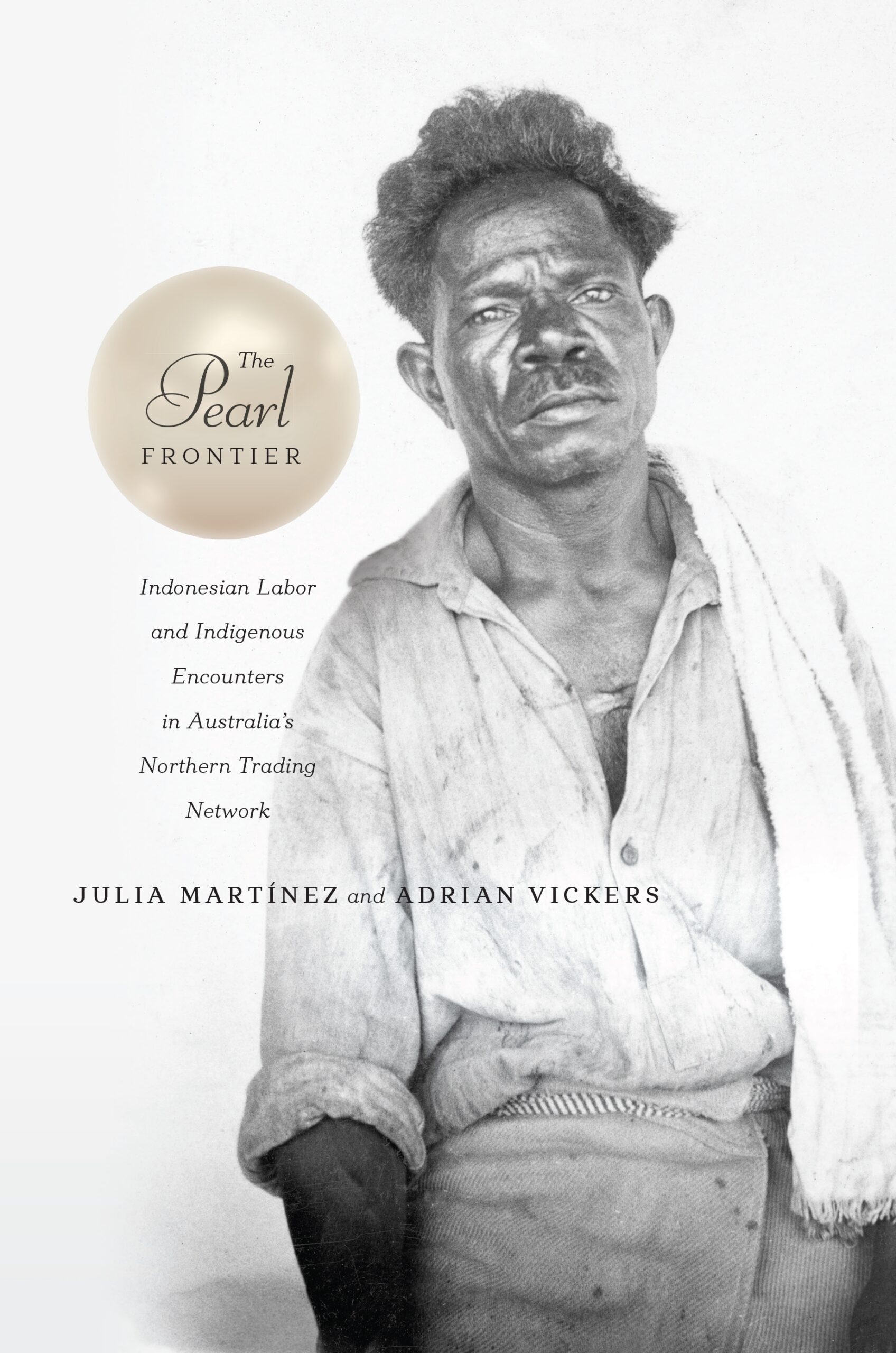The Pearl Frontier: Indonesian Labor and Indigenous Encounters in Australia’s Northern Trading Network
Awards
- Winner of the 2016 Chief Minister's Northern Territory History Book Award, 2016
- About the Book
-
Remarkable for its meticulous archival research and moving life stories, The Pearl Frontier offers a new way of imagining Australian historical connections with Indonesia. This compelling view from below of maritime mobility demonstrates how, in the colonial quest for the valuable pearl-shell, Australians came to rely on the skill and labor of Indonesian islanders, drawing them into their northern pearling trade empire. From the 1860s onward the pearl-shell industry developed alongside British colonial conquests across Australia’s northern coast and prompted the Dutch to consolidate their hold over the Netherlands East Indies. Inspired by tales of pirates and priceless pearls, the pearl frontier witnessed the maritime equivalent of a gold rush; with traders, entrepreneurs, and willing workers coming from across the globe. But like so many other frontier zones it soon became notorious for its reliance on slave-like conditions for Indigenous and Indonesian workers. These allegations prompted the imposition of a strict regime of indentured labor migration that was to last for almost a century before giving way to international criticism in the era of decolonization.
The Pearl Frontier invites the reader to step outside the narrow confines of national boundaries, to see seafaring peoples as a continuous population, moving and in communication in spite of the obstacles of politics, warfare, and language. Instead of the mythologies of racial purity, propagated by settler colonies and European empires, this book dissects the social and economic life of the port cities around the Australian-Indonesian maritime zone and lays open the complex, cosmopolitan relationships which shaped their histories and their present situations.
Julia Martínez and Adrian Vickers bring together their expertise on Australian and Indonesian history to challenge the isolationist view of Australia’s past. This book explores how Asian migration and the struggle against the restrictive White Australia policy left a rich legacy of mixed Asian-Indigenous heritage that lives on along Australia’s northern coastline.
This book is an important contribution to studies of the coastal, or Pasisir, culture of Southeast Asia, that situates the local cultures in a regional context and demonstrates how Indonesian maritime peoples became part of global migration flows as indentured laborers. It offers a hitherto untold story of Indonesian diaspora in Australia and reveals a degree of Indian-Pacific interconnectedness that forces us to rethink the construction of regional boundaries and national borders.
- About the Author(s)
-
Julia T. Martínez, Author
Julia T. Martínez is a professor of history at the University of Wollongong.Adrian Vickers, Author
Adrian Vickers holds a personal chair in Southeast Asian Studies and is director of the Asian Studies Program at the University of Sydney.Clem Guthro, Author
- Reviews and Endorsements
-
This welcome volume focused on maritime Australian-Indonesian connections, serves as a reminder
a reminder of the deep historical roots of the intertwined dynamics of mobile capital and mobile labor. Through meticulous research, the authors identify and trace the complex networks that drew together Euro-Australian capital and Indonesian indentured labor in the pearling industry . . . The authors draw on a wealth of sources from standard archives to newspapers, literature, and oral histories to narrate this fascinating history.
—The Historian- This is an important book for two reasons. First, Martínez and Vickers set out to uncover a shared history between Australia and Indonesia in a period when these two emerging nations are usually considered quite separate. . . . Second, The Pearl Frontier challenges the inflexible nature of Australia's twentieth century policy of immigration restriction, epitomized by the notorious White Australia Policy.
—World History Connected - Martínez and Vickers place their impressive study of pearling firmly in the long history of mobility of people and goods across borders in what we now call Southeast Asia. The personal stories provide additional value that deepen our understanding of indentured labour.
—Bijdragen tot de Taal-, Land- en Volkenkunde - This book should be on the 'read urgently' list of every labour historian. . . . This is an analysis which moves effectively between the emotion of personal stories- the lives of workers and their families- across two empires to the financial capitals of the world. . . . This book allows insight into that world of transnational labour which is just as crucial for the labour historians of Melbourne or Sydney as it is for those of the extraordinary industries of the seas between northern Australia and eastern Indonesia.
—Labour History Melbourne - This book makes a valuable contribution to scholarship on the history of commerce and labour in the Timor and Arafura Sea region. Pearling activities shaped the region’s modern society and inadvertently transformed race-based ideologies and labour movements throughout Australia. Blending scholarship with chronicles of the workers’ lives makes the book accessible and interesting to a wide readership.
—A. Ross Gordon, St. Stephen's College, Edmonton, Pacific Affairs, 90:1 (March 2017)
- Supporting Resources
-





